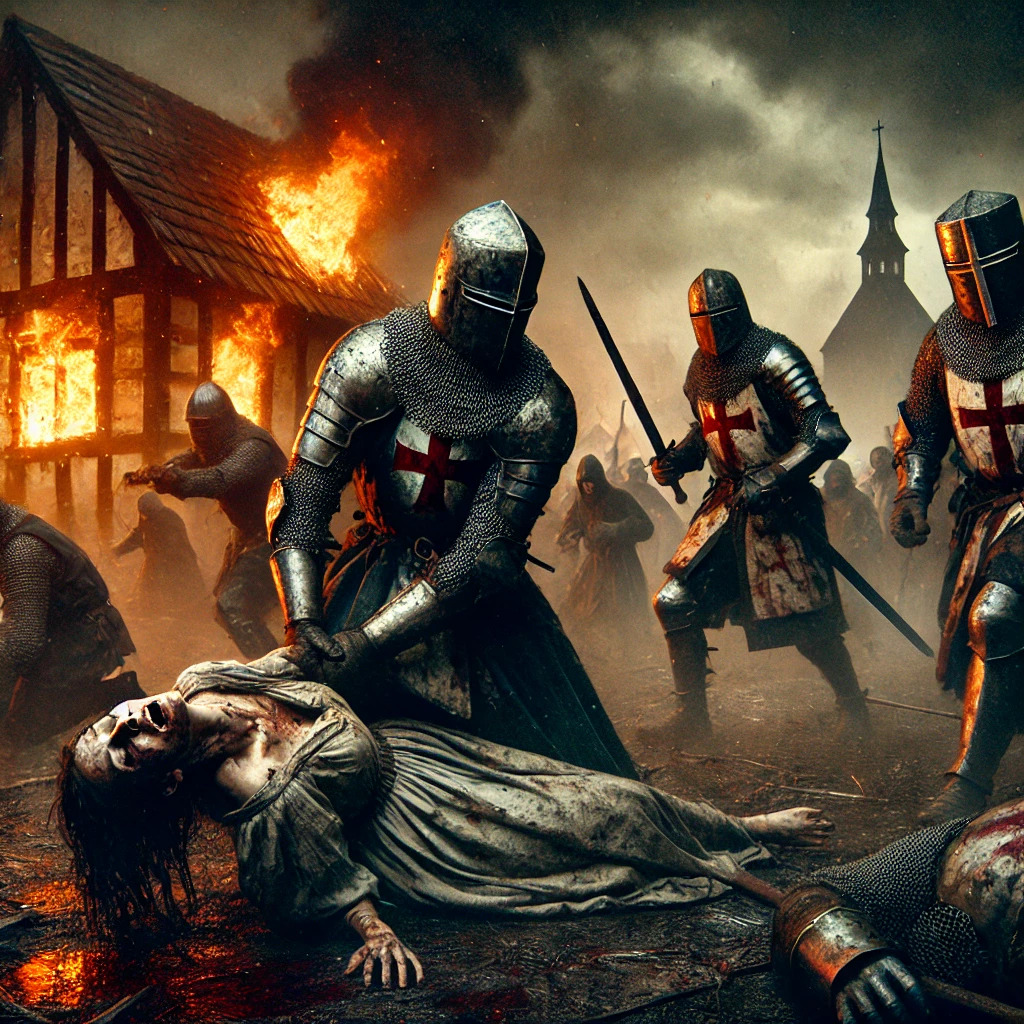The Medieval Knight: Myth and Reality
The romantic image of the medieval knight, often depicted in legends and fairy tales, portrays him as a noble, loyal, and just hero, devoted to his lord and the cause of justice. However, the historical reality is far more complex and less idealized. Most medieval knights were warriors trained for war from a young age, living lives marked by violence, survival, and acts far removed from chivalric ethics.
The Path to Knighthood
Becoming a knight was not an easy process. It began in childhood, usually between the ages of seven and ten, when a noble boy was sent to a lord’s court as a page. There, he learned the basics of etiquette, culture, and the art of war. Around the age of 14, he became a squire, assisting a knight in battle and training, learning to wield weapons and fight.
The official knighthood ceremony took place between the ages of 18 and 21, often accompanied by a religious ritual. However, not all knights followed the code of honor—many were mercenaries, ruthless executioners, and opportunistic predators in times of war.
The Reality of a Knight’s Life
Although the chivalric code promoted ideals of loyalty, courage, and protection of the weak, these principles were often overshadowed by the harsh realities of medieval warfare. In times of war, knights were essentially war machines, trained to kill and plunder.
Pillaging, Violence, and Predation
Medieval wars were characterized by raids, plundering, and extreme brutality. Knights often took advantage of wartime chaos to pillage villages, seize wealth, and abuse the civilian population. Rape, indiscriminate killings, and arson were common practices during military campaigns, with little to no consequences for those responsible. War was not only a feudal duty but also an opportunity for personal enrichment.
One of the most brutal accounts comes from Raymond of Aguilers, chaplain of the First Crusade, describing the Massacre of Jerusalem (1099):
"The streets of the city were covered with severed heads, hands, and feet. Our men spared no one, not even women and children."
This testimony highlights the ferocity with which the Crusader knights slaughtered the defenseless population, turning the conquest into a bloodbath.
Another striking example is reported by Robert de Clari, an eyewitness to the Sack of Constantinople (1204) during the Fourth Crusade:
"They burned houses and churches, desecrated the Great Altar of Hagia Sophia, looted relics, and raped women, even nuns."
This episode demonstrates how knights, rather than defenders of the faith, were often ruthless predators driven by the thirst for wealth and power.
Stress, Exhaustion, and Trauma
A knight's life was not just about glory and battle. The physical and mental strain of warfare was immense. Wearing full armor for hours, riding for days, and engaging in deadly duels required extraordinary endurance. Additionally, many knights suffered from permanent injuries, psychological trauma, and diseases. Medieval warfare was brutal, with no concept of psychological care or advanced medical treatment. Many died from infections or the consequences of untreated wounds.
The medieval knight was rarely the flawless hero depicted in romantic literature. For many, knighthood was synonymous with opportunism, violence, and looting. While some knights attempted to live according to the chivalric code, the majority operated in a world of war and brutality, leaving little room for honor. The medieval reality was harsh and unforgiving, and the knight was, above all, a warrior—often indulging in the excesses and horrors that came with the role.








Leave a Comment